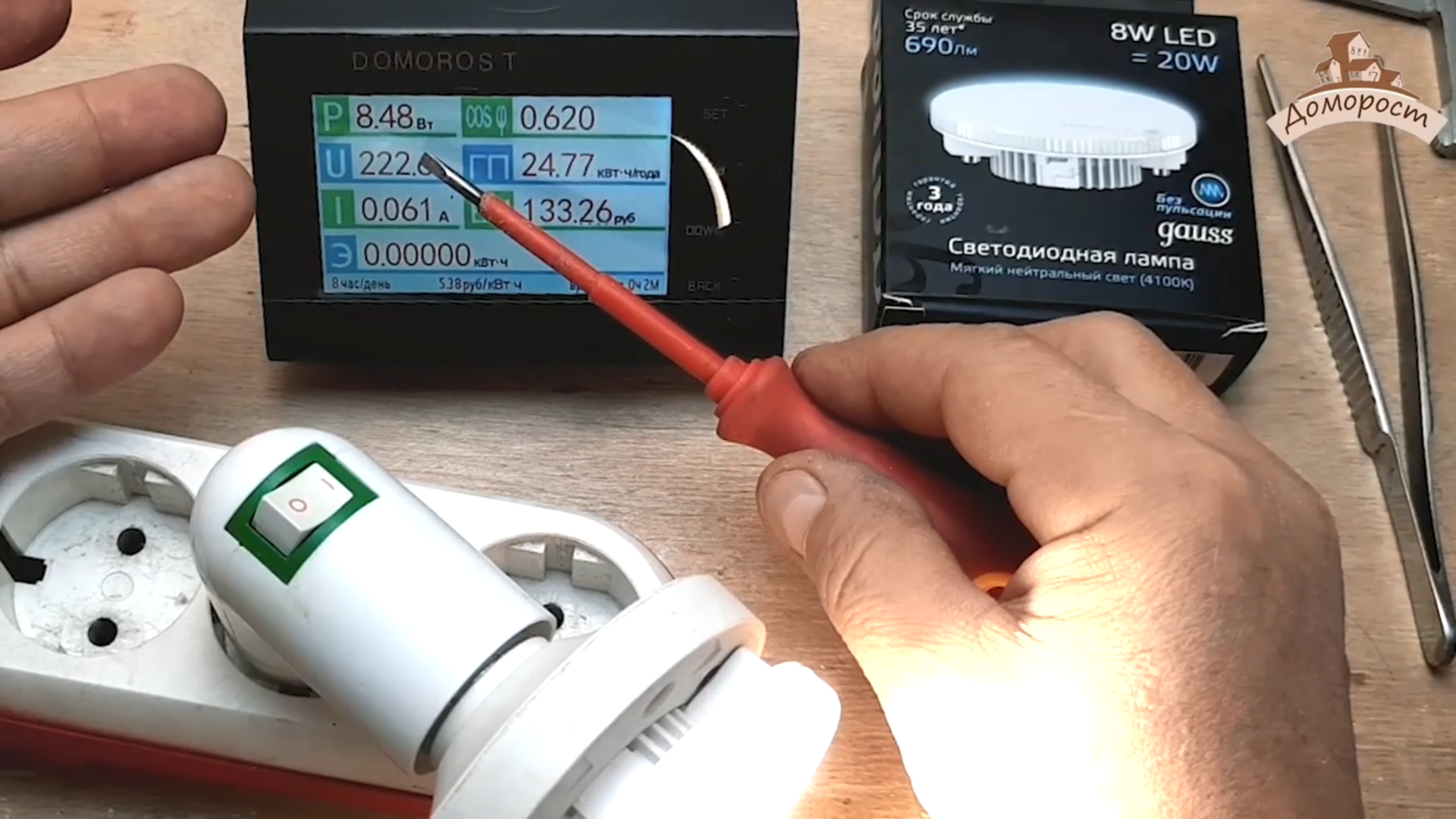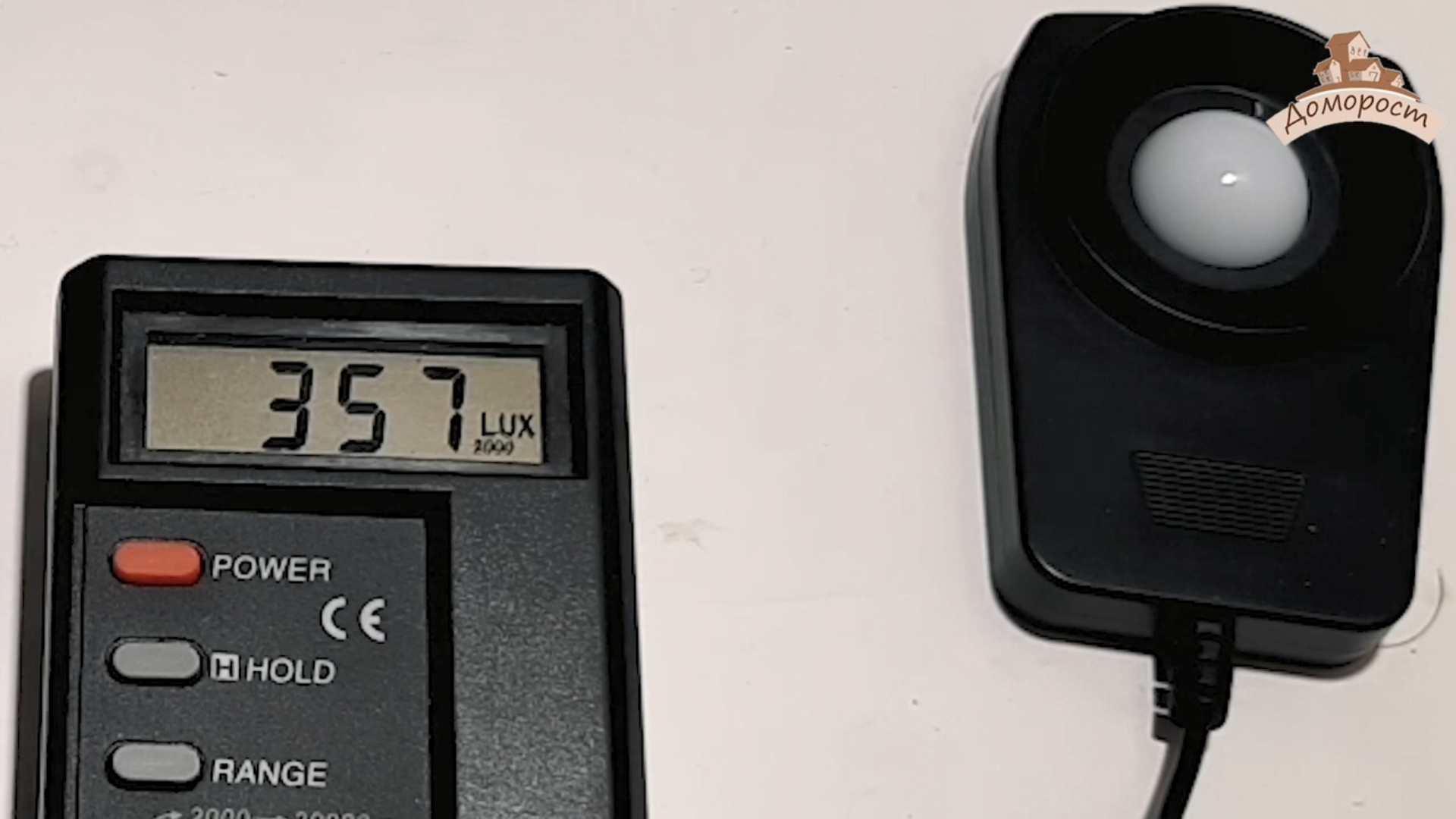Gx53 by Gauss – Testing an 8W Lamp
Today we will talk with you about the LED lamp for stretch ceilings from the famous manufacturer Gauss.

Gauss is the undisputed leader in the industry, we talked about this in the review of the Resant lamp, although this can be treated in different ways. Often I hear and extremely negative reviews about this manufacturer. And it’s good that we have such feedback, probably the manufacturer does not look at the same thing as the client. And to read each other’s thoughts, alas, there is no way yet.
Well, let’s get straight to the point. The manufacturer promises us 8 watts of power of its product. I would be glad to believe, but the manufacturer usually overestimates the power of the light bulb by about 10-20%. Did this rule work this time?
At the input of 220 volts, turn on the lamp and the first time you turn it on, I observe 8.5 watts. Very good!

Nevertheless, the standard that should be in our power supply is 230 Volts, I change the voltage to it and look at the results. Power slightly decreased and became equal to 8.3 watts.

I’ll leave the lamp on for fifteen minutes and see what happens. After warming up the lamp, I observe an excellent result – 8 W of power, exactly what the manufacturer stated.

Let’s now look at this light bulb in terms of light quality. Gauss promises a color temperature of 4100 K. In fact, it turned out to be 3943 K. The color rendering coefficient was declared to be more than 90, but in fact – 80.

Gauss also claims that this lamp has no pulsations, let’s see for ourselves! The fluctuations turned out to be equal to 1.32%. In terms of standards, everything is fine, the ripple is below 5%, but still I expect a better result from the industry leader, i.e. less than 1% ripple.

It’s time to measure the illumination from the lamp. The light bulb is located a meter above the plane of the table, a light meter is located directly below it. So, at 220 volts at the input, the illumination is 360 Lux. When the voltage changes up to 250 volts, the illumination does not change. And if it drops to 170 volts? No – nothing changes, 357 Lux on the device. Very good, the lamp is resistant to changes in mains voltage.
I am deeply sure that this test is clearer on the video, if you think the same, then I am attaching a link to it for you.

The tablet from Gauss goes out at a voltage of 70 volts. Yes, such a lamp can be used somewhere in the village, where the voltage is not so stable.
Consider the operation of a light bulb with a backlit switch. No complaints, everything works as it should.

The dimensions of the lamp correspond to those indicated on the package.

The bulb temperature is 49 degrees. The radiator of the lamp on its reverse side heats up to 42 degrees. Good result, the lamp is cold. Will work for a long time.

You can see the illumination pattern of the GX53 tablet from Gauss in the graph below. It is important that I got a luminous flux equal to 579 Lumens, while the flux of 690 Lumens was declared by the manufacturer.

So, it’s time to look inside the light bulb. I take the flask. The diode board is pressed against the body with a pair of self-tapping screws. There are 18 LED cases on the board, all are connected in series, two small crystals are guessed inside each case, but we will clarify this later.

It’s time to measure the temperature of the board. After half an hour of operation, the temperature is 59 degrees Celsius.

Upon closer inspection, a pair of crystals is clearly visible in each LED package.

The forward voltage drop across a normally lit LED body is 6 volts.

The current in the LED power circuit is 68 mA.

We disassemble the light bulb further … Having unscrewed the screws and loosened the plug-in connections, I can simply pick up the diode board and remove it. Thermally conductive paste is observed under it. Applied in two spots, rather casually.
Community Notes
It’s good that Domorost is a community. At this point, I was supplemented by noting that spreading thermally conductive paste on the body plate is a rather strange thing.
The most common assumption to justify this behavior has been the idea that the manufacturer simply wants to write off the additional expense. Personally, I can not say anything – I do not know. I would like to know what you think about this.

To remove the board, you have to apply quite a lot of physical effort, and only then the power wires give in.

On the board, you can observe a pulse driver, an honest inductor, electrolyte from the correct manufacturer.

That’s all. Gauss this time rather pleased. But still, you need to understand that an 8 W lamp is quite comfortable conditions for the manufacturer. There is also a poor match of the color rendering index. But I began to measure it very recently and so far I do not have a sample to say something about the systematic nature of this discrepancy in the industry. And yes, to produce more powerful lamps cold and of high quality is not an easy challenge, I would like the manufacturer to adequately accept it.
Domorost was with you, see you next time!




